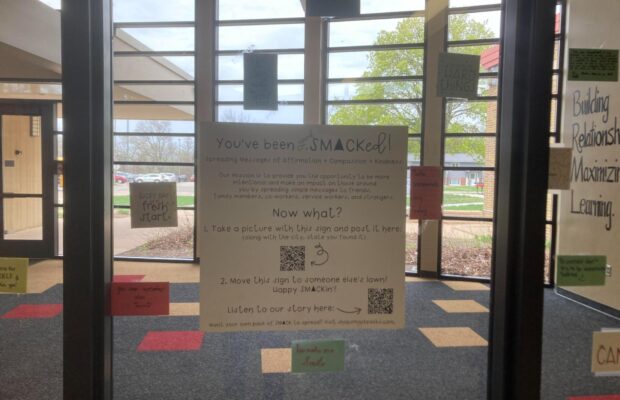State goals leave CF behind
Kaylee Micu/Staff Writer
A student with dyslexia struggles to read the book between her hands while her classmates speed through it with ease. Another fails his math test while all the others seem to pass.
The No Child Left Behind (NCLB) program is targeted toward helping schools raise the test scores of all students such as these, yet for the third straight year, Cedar Falls High School has missed the required expectations in some of the overall categories required by the federal government in this education law.
Each year through NCLB the federal government requires a state-wide standardized test to see the yearly improvement of schools by looking at the overall test scores. The federal government looks at the overall test scores in a number of categories of the school instead of individual test scores.
This is one of the flukes of NCLB. By looking at the overall test scores, some argue that the federal government can’t really tell how well the school is doing because for some students, there is just no motive to do well on the standardized tests because it doesn’t help these students in the future, though there are consequences for their school if the required trajectory is not met.
If a school fails to meet the required trajectory its first year, there is no consequence. The second year, however, the school is put on the Schools in Need of Assistance (SINA) list, and it must offer its students the chance to transfer to a school in the same district that is not on the list. The third year, the offer to transfer must still be offered as well as providing tutors for those below the minimum competency in required areas. In the fourth year of not meeting the required scores, corrective action is taken. This can include replacing of staff, new curriculum and outside consultants. The fifth year, the school may be restructured. The school may have to reopen as a charter school, and private contracting managements may come in; outside managements could turn the school over to the state, and fundamental reforms could be offered. The sixth year, a restructuring plan will be developed for the prior year.
“There have been some good things that have come out of this. It’s not all bad. It has forced school districts to look at their data a lot more,” Director of Secondary Education Dan Conrad said.
NCLB was enacted effective on Jan. 8, 2002, by President George W. Bush after he took office. NCLB was started so that children who struggled in school would not be left behind. NCLB has certain requirements for schools for each year the standardized test is given. In 2002, juniors in high school were required to have a trajectory of 69 percent above minimum levels in both math and reading. By 2005 the trajectory was expected to be 74.2 percent, 79.3 percent by 2008, 84.5 percent by 2011, 89.7 percent by 2012, 94.8 percent by 2013 and a 100 trajectory by 2014.
Cedar Falls High School is in its third year of not meeting the criteria for reading and its first year of not meeting the required test scores for math. The subgroup of special education students has been below the NCLB requirements for minimum proficiency. “It’s a game we can’t win,” Conrad said.
Even though special education students have special needs, they’re still expected to take the same test as everyone else. Almost all 4A schools are on the SINA list, though most other school districts that are similar in size to Cedar Falls are in their seventh and eighth years on the SINA lists. Smaller schools don’t need to worry as much about the NCLB because it’s almost impossible to meet the minimum numbers required in the subgroups such as race to get a reliable sampling of students.
The high school has programs that help students, whether they’re in special education or not. Dr. Tracy Johns helps students with homework, math and reading in a special class called RAMP so that some students can have good grades throughout the entire school year and skills for raising their standardized test scores.
On a positive note, compared to other schools, the high school is doing well on requirements for graduation rates. Cedar Falls High School has around a 97-98 percent graduation rate, while the state-wide average is only 88 percent.






You must be logged in to post a comment Login